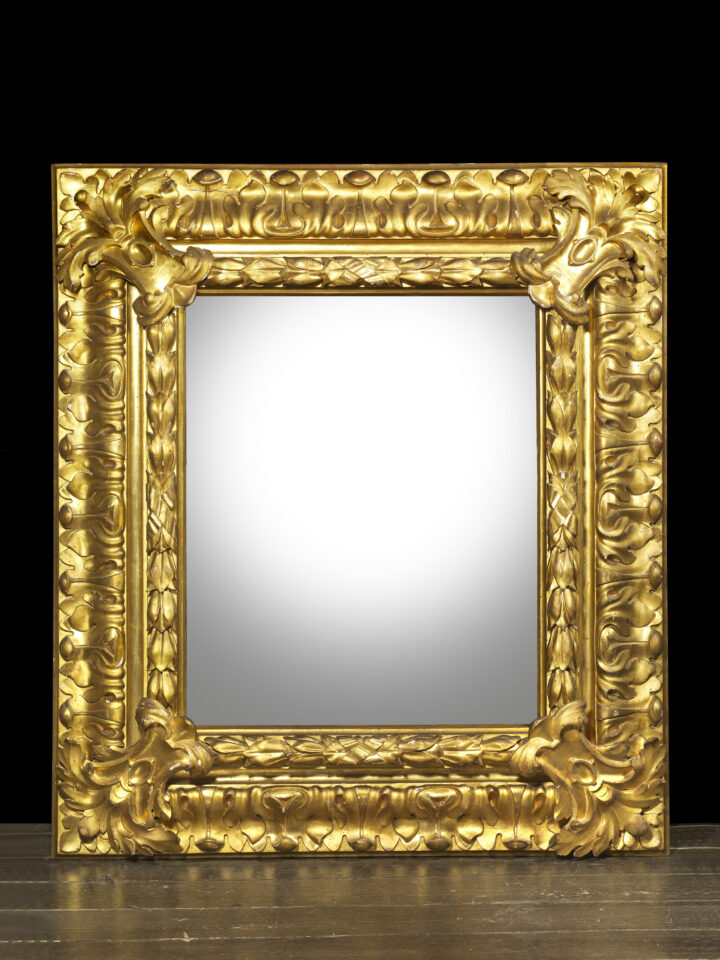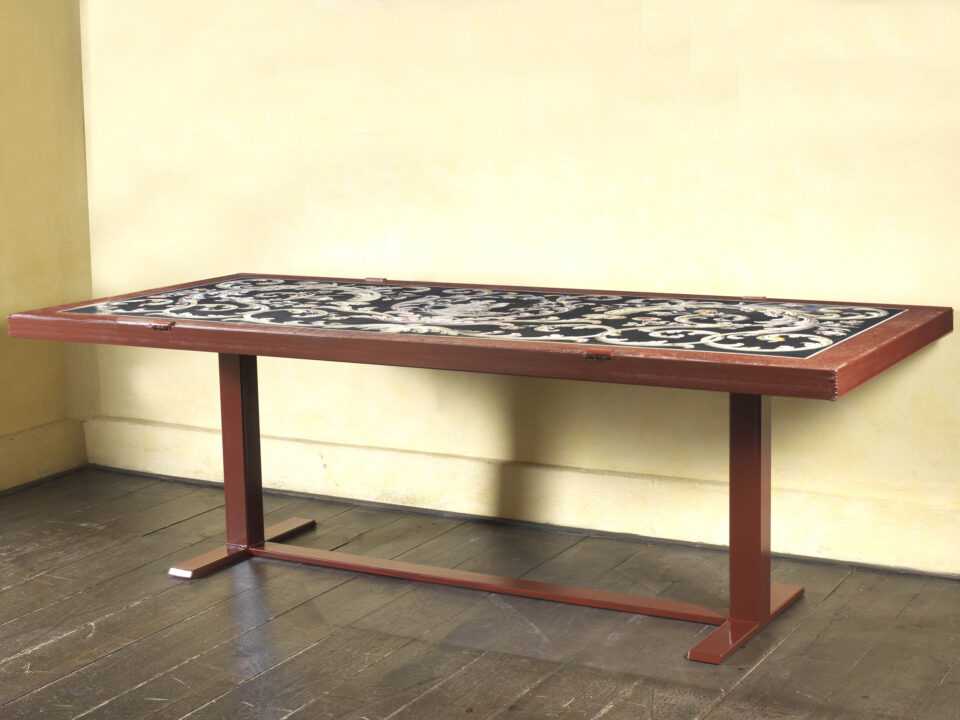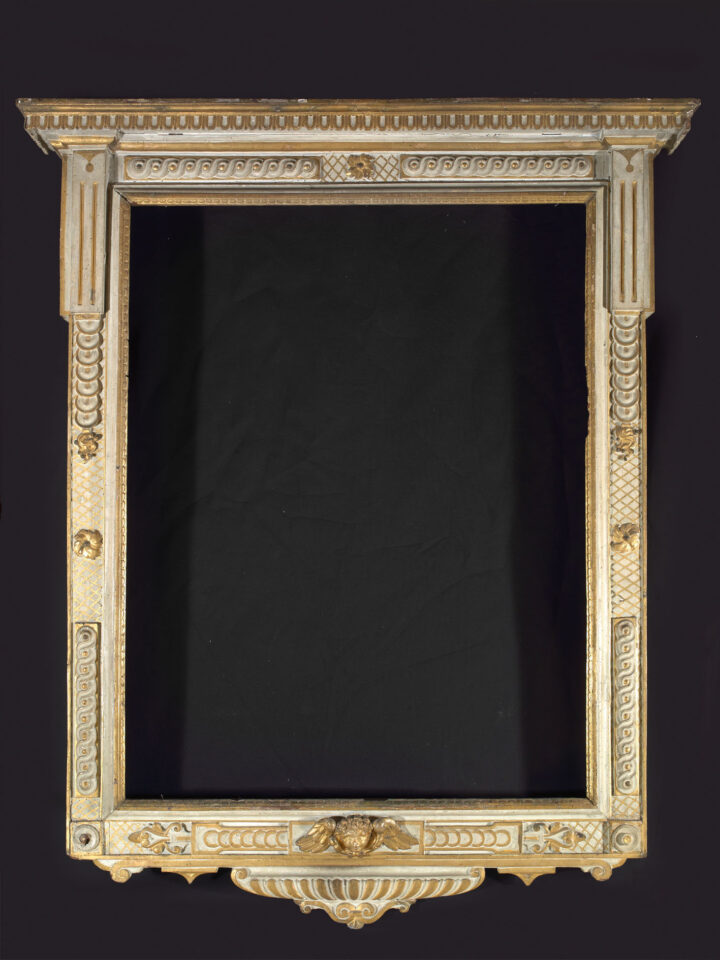PROCESSIONAL CROSS
engraved and chiseled silver, gilded bronze, modern base in black Belgian marble
The liturgical furnishings in question consists of a silver processional cross wedge in a polished bronze component, dominated by a wide golden node in the shape of a globe. The latter is also enriched by a sumptuous decoration ending in two tiny silver cherubs’ heads fitted on the side. The angelic heads, in gilded bronze casting, are found again at the end of the arms of the cross, within areas defined by volutes decorated, on the perimeter, with three gilded bronze lilies. This element comes back in the intersection of the cross’ arms.
The finely crafted Christ in silver casting is ascribable to a Giambologna style model headed by the dead Christ in the Palazzo Apostolico di Loreto, mainly attributed to Guglielmo della Porta. The sculptor, who studied in Genoa and worked in Rome, “led […] a workshop also specialized in the creation of bronze and silver Crucifixes, operating in the most important work-sites of Papal Rome and in the service […] of the greatest European dynasties” (D. Lucidi, Giambologna e Torino. Tre crocifissi bronzei dal Real Castello di Racconigi […], in the process of being published).
The crowned stamp “NAP” is engraved on the vertical arm of the cross, which allows to ascribe this work to a Neapolitan craftsmanship, most likely around the first half of the seventeenth century. This mark, “which, from the beginning of the seventeenth century, lasts until after the middle of the century”, finds here the peculiarity (which went unnoticed in Catello’s study) of missing the customary point on top of the central “A”.
A reliquary made in 1603 by silversmith Costanzo Pisa, who is also the likely author of our artifact, shows a similar decorative repertoire, characterized, like with the cross, by almost identical cherubs’ heads surrounded by volutes and lilies.
Naples, first half of the 17th century
cm 104 height, cm 119 with the base





